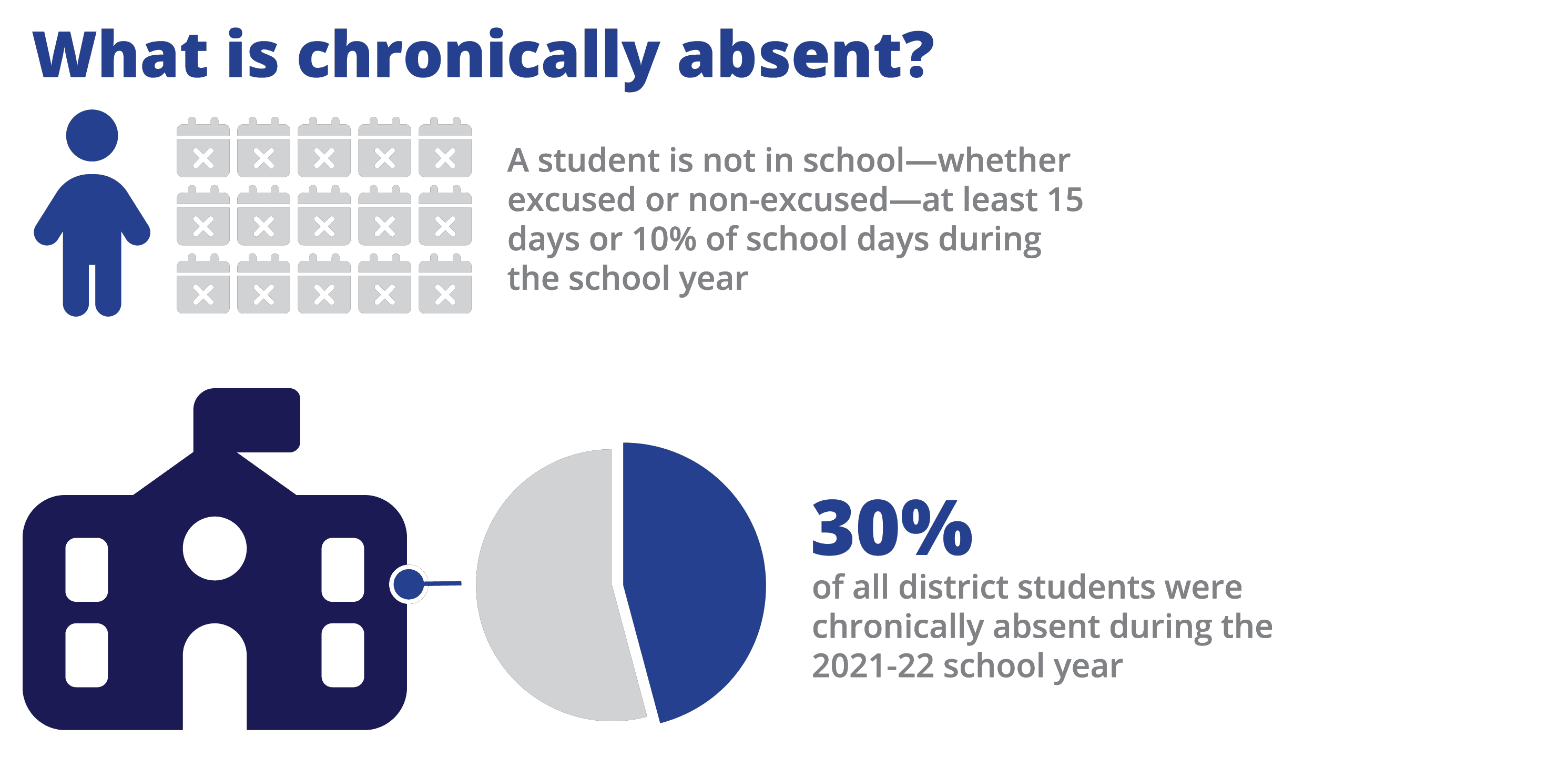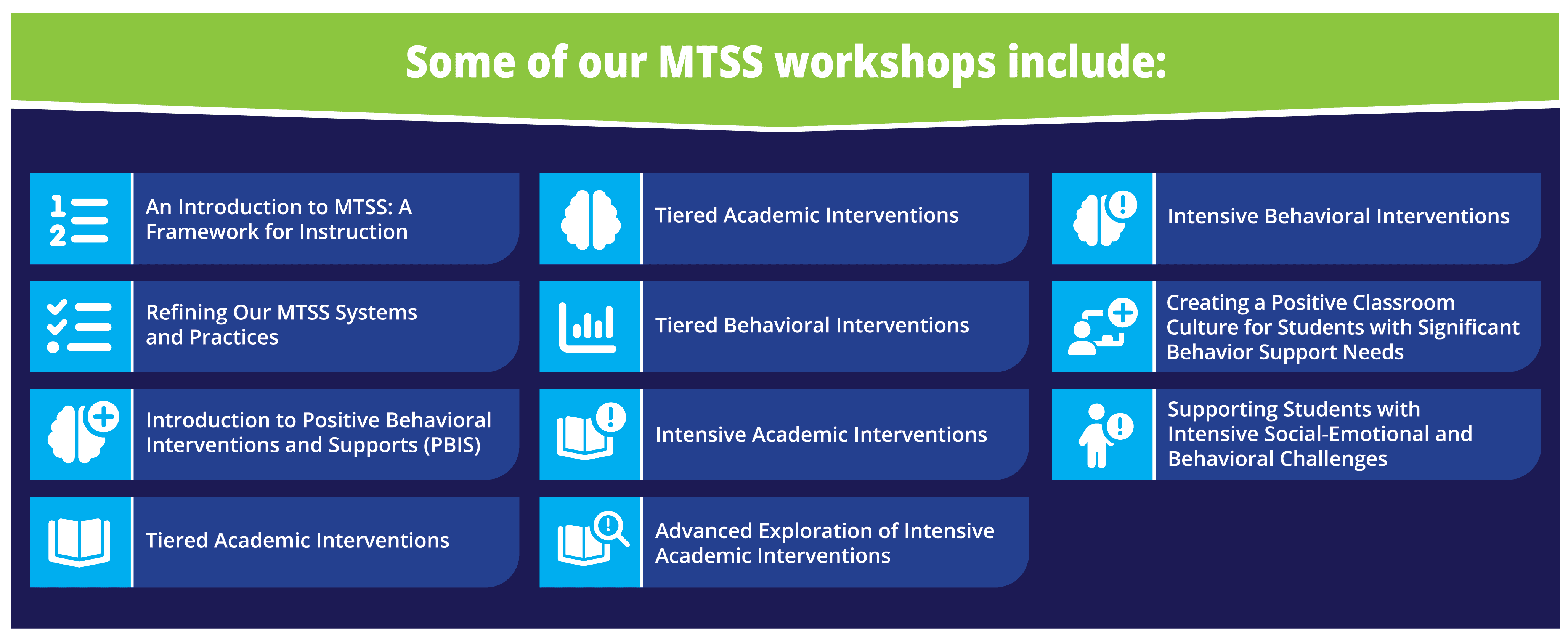Table of Contents
Chronic absenteeism from school—which increased dramatically during the pandemic—continues to be a nationwide crisis. The chronic absenteeism rate, which stood at nearly 15 percent during the 2018-2019 school year, exploded to approximately 30 percent in the 2021-2022 school year. In this article, we’ll look deeper into absenteeism, how it impacts students, and how Catapult Learning can help.

Defining Chronic Absenteeism
Chronic school absenteeism occurs when students are “chronically absent,” meaning they are not in school—whether excused or non-excused—at least 15 days (or 10% of school days) during the school year. Many factors are assumed to be causes of absenteeism, such as health issues, poverty, family illnesses and deaths, neighborhood violence, and challenging family environments. The COVID-19 pandemic certainly amplified some of these factors, with more than 1 million students losing a grandparent and another 200,000 students losing a primary caregiver during varying stages of the pandemic.
During the 2021-22 school year, nearly 14.7 million students were considered chronically absent. Compared to the last full school year before the pandemic (2018-19), approximately 6.5 million more students were absent at least 10% of the school year. One of the more stunning statistics revealed that, during the 2021-22 school year, about two-thirds of all enrolled students (over 32 million) attended a school with either high levels (20-29% of students chronically absent) or extreme levels (30% or above chronically absent) of chronic absence.
Additionally, every state (where data were available) experienced significant increases in chronic absenteeism rates between the 2018-19 and 2021-22 school years. And these rates further widened the disparity of chronic absenteeism across ethnic, racial, and socioeconomic categories. Chronic absences were more common among Latino, Black, and low-income students.
What are the leading causes of chronic school absenteeism?
According to AttendanceWorks, the reasons for chronic absence from school fall into four broad categories, with more specific causes layered within those four buckets.
- Barriers: Causes include illness, trauma, family responsibilities, a difficult home environment, lack of transportation, inability to access necessary services and technology, neighborhood violence, and disciplinary/legal records.
- Disengagement: Reasons include boredom, lack of meaningful adult relationships at school, minimal culturally inclusive instruction, absence of challenging instruction, no academic or behavioral support, conflicts with work schedules (high school students), and failure to earn class credits.
- Aversion: Causes include academic and/or behavioral struggles, anxiety, lack of friends/social relationships, violent school climate, biased disciplinary practices, undiagnosed disabilities, lack of accommodations for disability, and negative school experiences for student’s caregiver.
- Misconception: Common misconceptions are that missing a couple of days of school here and there won’t impact learning, absences are only an issue if unexcused, parents assume their child must stay home with any sign or symptom of illness, attendance is only important in high school, and suspensions don’t count as absences.
These factors have resulted in a dramatic increase of chronic absenteeism over the past few years, and it’s taking a toll on school communities across America.
Why chronic absenteeism is bad for students and schools?
On the surface, chronic absenteeism hurts school communities because students simply aren’t getting the education they need for future success. Aside from the negative impact on grades and test scores, absenteeism is often considered a precursor to dropping out of high school. A 2016 study by the Robert Wood Johnson Foundation revealed that students who are chronically absent any year between 8th and 12th grade are more than seven times more likely to drop out of high school than students who attend school regularly.
Even more alarming are the long-term ramifications of being chronically absent from school. The same 2016 study concluded that “people who are better educated are more likely to live longer, healthier lives.” Further, the study claimed that, on average, college graduates are likely to live approximately nine years longer than someone who dropped out of high  school. The study also suggested that adults with less education are more prone to unhealthy habits (like smoking), obesity, and diabetes—all of which may contribute to premature deaths. Finally, those with more education are more likely to have jobs with better working conditions, more comprehensive health insurance, and higher pay.
school. The study also suggested that adults with less education are more prone to unhealthy habits (like smoking), obesity, and diabetes—all of which may contribute to premature deaths. Finally, those with more education are more likely to have jobs with better working conditions, more comprehensive health insurance, and higher pay.
Lost in the shuffle is the effect that chronic absenteeism has on schools themselves. According to PowerSchool, student enrollment directly impacts district funding. When students drop out, districts lose money. And that trickles down in many directions—less money to hire and train school staff, fewer resources to support students, and no budget to make necessary campus updates and repairs. As you can see, chronic absenteeism’s impact can devastate an entire school community.
What can be done to address absenteeism?
While there is no catch-all solution to the nationwide absenteeism crisis, there are steps that can help mitigate the attendance issues our country faces today. The first step is working to understand the four leading causes of chronic school absences—barriers, aversion, disengagement, and misconception. According to District Administration, states are responding to these causes in multiple ways, including deploying task forces to address root issues, and leveraging technology to keep students engaged.
One way to address absenteeism includes using a Multi-Tiered Systems of Support (MTSS) approach that can help districts put foundational strategies into place that focus on promoting positive conditions for learning.
MTSS frameworks employ three tiers:
The MTSS framework must be implemented with fidelity and at all levels—from the state level to the individual school community. This effort must remove barriers to attendance while constructing a new culture of daily school attendance. What does this involve?
Safe learning environments—physically and emotionally—are an ideal place to start. When students feel comfortable and safe in their learning environment, they enter the school doors in the morning–a critical first step.
The next step—just as important—is keeping them in the building. If students do not engage with their education, they walk out the door and do not return. While the specifics will vary by school, engaging and relevant learning must be part of the equation.
Once students are more engaged and willing to learn, the next step is allowing chronically absent students catch up on their missed studies so they can earn the necessary credits and, ultimately, graduate.
Chicago Public Schools, to improve its chronic absenteeism rates, created this detailed MTSS framework.
The question remains, “How do we get to that point?” None of these steps can occur unless school staff buy in. To that end, districts must make educator well-being a top priority. This effort should naturally resolve staff shortage issues and foster engagement and excitement among staff to put the student-aimed steps into place and create a positive learning environment.
How is chronic absenteeism addressed with parents?
This is a more challenging problem, as family situations vary. Chronically absent students, as we covered, often face significant barriers such as lack of transportation to and from school, unsafe neighborhood conditions, minimal health care, food insecurity, and unreliable housing conditions. Nevertheless, the attendance issue must be addressed, and it requires the right approach or schools risk alienating the families they’re trying to help.

How Catapult Learning can help
MTSS can be an effective approach, when implemented thoughtfully and executed as intended, to help mitigate chronic absenteeism. Catapult Learning’s professional development includes MTSS workshops that are essential to absenteeism intervention and school culture improvement. By empowering teachers to better understand their students and their needs, districts can create more positive, safe, learning-ready environments that encourage students to not only come to school but to engage and learn.

To complement our workshops, Catapult Learning offers coaching specifically targeting the implementation of MTSS. Find out more at https://catapultlearning.com/programs/professional-development/
